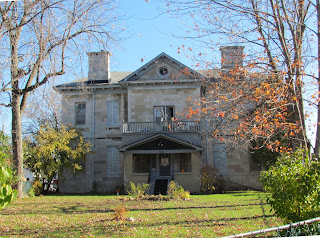 A history blog which I greatly enjoy, Spectres of Kingston Past, has a great account of a little known area of Kingston.
A history blog which I greatly enjoy, Spectres of Kingston Past, has a great account of a little known area of Kingston. Once called Picardville or "the French village," the area's nineteenth century character is described by blogger Francesca Brzezicki in juicy detail: "...known for its filth and poverty. It was a notorious area, kept afloat by a steady business in alcohol, crime and prostitution." (Follow the link to read the entire post, it's great.)
Once called Picardville or "the French village," the area's nineteenth century character is described by blogger Francesca Brzezicki in juicy detail: "...known for its filth and poverty. It was a notorious area, kept afloat by a steady business in alcohol, crime and prostitution." (Follow the link to read the entire post, it's great.)I first learned of Picardville from a brief mention by Margaret Angus in her classic Kingston architecture work The Old Stones of Kingston (1966.) Ms. Angus was not quite so forthcoming.

In her chapter on 'North Kingston', she mentions the expansion of the city during 1840-50: "houses filled lots from Queen Street to Picardville." That was it. That one line was enough to prompt some on-line bashing about, which was when I found Francesca's blog.
 Had to go there myself for the rest of the story. But this unplanned growth does explain the village feel of the place, with streets running higgledy-piggledy, houses sat at odd angles to the road, an inviting park which was once a nastily overcrowded cemetery. Picardville, the French village, is a neighbourhood now, a small village absorbed by the expanding city. I could happily become a villager.
Had to go there myself for the rest of the story. But this unplanned growth does explain the village feel of the place, with streets running higgledy-piggledy, houses sat at odd angles to the road, an inviting park which was once a nastily overcrowded cemetery. Picardville, the French village, is a neighbourhood now, a small village absorbed by the expanding city. I could happily become a villager.Last week, in some of the last warm golden days of fall, I walked many of the streets of Picardville. A pleasant, well-loved, family-oriented place, with some fine old stone houses cheek by jowl with improved working class frame homes. A few barns, shops, garages. Resonance.

Picardville is bounded by Princess, Division, Raglan and Barrie streets, according to Spectres of Kingston.
I may have wandered out of bounds for some of these photos, but it sure felt like a village walk to me.


No comments:
Post a Comment